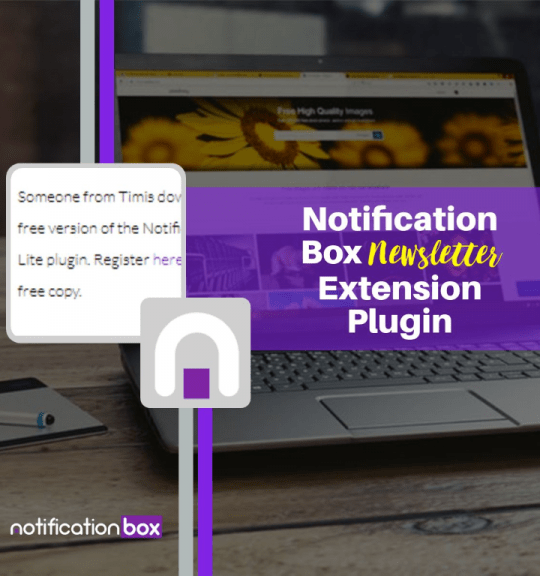Blog
Digital Medical Boards: A Notification Box for Better Patient Communication
In the rapidly evolving landscape of healthcare, digital medical boards have emerged as a transformative tool that enhances communication between healthcare providers and patients. These boards, often displayed in waiting rooms, lobbies, and patient care areas, serve as dynamic platforms for sharing vital information. Unlike traditional static boards, digital Medical Boards can be updated in real-time, allowing for the dissemination of timely announcements, educational content, and health-related news.
This shift from analog to digital not only modernizes the patient experience but also aligns with the increasing demand for technology-driven solutions in healthcare. The integration of digital medical boards into healthcare settings represents a significant leap forward in how information is conveyed. With the ability to incorporate multimedia elements such as videos, animations, and interactive content, these boards engage patients more effectively than their traditional counterparts.
As healthcare organizations strive to improve patient satisfaction and outcomes, digital medical boards stand out as a versatile solution that addresses the need for clear and accessible communication. By harnessing the power of technology, healthcare providers can create an environment that fosters better understanding and engagement among patients.
Key Takeaways
- Digital medical boards are revolutionizing healthcare by improving patient communication and streamlining processes.
- Effective patient communication is crucial in healthcare for building trust, ensuring understanding, and improving outcomes.
- Digital medical boards improve patient communication by providing secure messaging, telemedicine capabilities, and access to medical records.
- Features of digital medical boards include real-time communication, remote monitoring, and integration with electronic health records, leading to benefits such as increased efficiency and patient satisfaction.
- Implementation and integration of digital medical boards in healthcare settings require addressing privacy and security concerns, as well as training staff for effective use.
The Importance of Patient Communication in Healthcare
The Consequences of Poor Communication
Conversely, poor communication can result in misunderstandings, increased anxiety, and even adverse health effects. Therefore, fostering an environment where open dialogue is encouraged is essential for both patient satisfaction and safety.
The Multifaceted Nature of Patient Communication
Moreover, patient communication extends beyond verbal interactions between healthcare providers and patients. It encompasses all forms of information exchange, including written materials, visual aids, and digital platforms.
Adapting to the Digital Age
In an era where patients are increasingly tech-savvy and accustomed to instant access to information, healthcare organizations must adapt their communication strategies accordingly. By leveraging innovative tools like digital medical boards, providers can bridge the gap between complex medical information and patient comprehension, ultimately enhancing the overall patient experience.
How Digital Medical Boards Improve Patient Communication

Digital medical boards significantly enhance patient communication by providing a centralized platform for information dissemination. These boards can display a variety of content tailored to the needs of patients, including educational materials about specific conditions, preventive health tips, and updates on clinic hours or services offered. By presenting this information in an engaging format, healthcare providers can capture patients’ attention and facilitate better understanding of their health needs.
This adaptability ensures that all patients receive relevant information in a format they can understand. Furthermore, the use of visuals—such as infographics or videos—can simplify complex medical concepts, making it easier for patients to grasp essential information about their health.
As a result, digital medical boards not only improve communication but also promote health literacy among diverse patient populations.
Features and Benefits of Digital Medical Boards
Digital medical boards come equipped with a range of features designed to enhance their functionality and effectiveness in healthcare settings. One of the most notable features is the ability to update content remotely and in real-time. This capability allows healthcare providers to respond swiftly to changes in schedules, new health guidelines, or urgent announcements without the need for physical alterations to printed materials.
Additionally, many digital boards offer interactive capabilities that enable patients to engage with the content actively—whether through touch screens or QR codes that link to further resources. The benefits of implementing digital medical boards extend beyond improved communication. They can also contribute to increased patient satisfaction by creating a more welcoming and informative environment.
Patients who feel informed are more likely to have positive perceptions of their care experience. Moreover, these boards can serve as valuable tools for promoting preventive health measures and encouraging patients to take an active role in their health management. By providing timely information about vaccinations, screenings, or wellness programs, digital medical boards can help drive patient engagement and foster a culture of proactive health management.
Implementation and Integration of Digital Medical Boards in Healthcare Settings
The successful implementation of digital medical boards requires careful planning and consideration of various factors within healthcare settings. First and foremost, organizations must assess their specific communication needs and identify the types of content that will be most beneficial for their patient population. This assessment may involve gathering feedback from patients and staff to ensure that the digital boards address relevant topics and concerns.
Once the content strategy is established, healthcare organizations must select appropriate technology solutions that align with their goals. This includes choosing hardware such as screens and mounting options as well as software platforms that facilitate content management. Integration with existing systems—such as electronic health records (EHRs) or appointment scheduling software—can further enhance the functionality of digital medical boards by allowing for seamless updates based on real-time data.
Training staff on how to use these systems effectively is also crucial for maximizing the potential of digital medical boards in improving patient communication.
Addressing Privacy and Security Concerns with Digital Medical Boards

As with any technology that handles sensitive information, privacy and security concerns are paramount when implementing digital medical boards in healthcare settings. Organizations must ensure that any patient data displayed on these boards complies with regulations such as the Health Insurance Portability and Accountability Act (HIPAA). This means avoiding the display of personally identifiable information (PII) or any details that could compromise patient confidentiality.
To address these concerns effectively, healthcare organizations should establish clear policies regarding the types of content that can be shared on digital medical boards. Additionally, employing robust security measures—such as encryption protocols and access controls—can help safeguard against unauthorized access or data breaches. Regular audits and assessments of the digital board systems can further ensure compliance with privacy regulations while maintaining a focus on patient safety.
Case Studies and Success Stories of Digital Medical Boards in Healthcare
Numerous healthcare organizations have successfully implemented digital medical boards, showcasing their effectiveness in enhancing patient communication. For instance, a large urban hospital integrated digital boards into its waiting areas to provide real-time updates on wait times and available services. Patients reported feeling more informed about their care process, leading to increased satisfaction scores in post-visit surveys.
Another example comes from a community clinic that utilized digital medical boards to promote preventive health initiatives such as flu vaccinations and wellness screenings. By displaying engaging visuals and informative content about these services, the clinic saw a significant uptick in patient participation rates compared to previous years when information was primarily communicated through printed flyers. These success stories highlight how digital medical boards can not only improve communication but also drive positive health behaviors among patients.
Future Trends and Innovations in Digital Medical Boards
As technology continues to advance, the future of digital medical boards holds exciting possibilities for further enhancing patient communication in healthcare settings. One emerging trend is the integration of artificial intelligence (AI) into digital board systems. AI can analyze patient demographics and preferences to deliver personalized content tailored to individual needs—ensuring that patients receive relevant information at the right time.
Additionally, advancements in augmented reality (AR) could revolutionize how information is presented on digital medical boards. Imagine patients being able to scan a QR code with their smartphones to access interactive 3D models explaining complex procedures or conditions. Such innovations would not only engage patients but also deepen their understanding of their health journeys.
In conclusion, digital medical boards represent a significant advancement in patient communication within healthcare settings. By leveraging technology to provide timely, relevant information in an engaging format, these boards enhance the overall patient experience while promoting better health outcomes. As healthcare organizations continue to embrace these tools and explore future innovations, the potential for improved communication and patient engagement will only grow stronger.
A related article to Digital Medical Boards: A Notification Box for Better Patient Communication is “Using Notification Box to Display Banner Ads.” This article discusses how healthcare providers can utilize the Notification Box plugin to effectively communicate with patients through banner ads. By incorporating this tool into their digital medical boards, providers can enhance patient engagement and improve overall communication. To learn more about this feature, check out the article here.
FAQs
What are digital medical boards?
Digital medical boards are electronic platforms or notification systems used by healthcare providers to communicate important information to patients. These boards can be accessed through a patient portal or mobile app, and they allow for secure and efficient communication between healthcare providers and patients.
What type of information can be communicated through digital medical boards?
Digital medical boards can be used to communicate a variety of information to patients, including appointment reminders, test results, medication reminders, and general health education materials. They can also be used to send out notifications about office closures, new services, or changes in healthcare policies.
How do digital medical boards improve patient communication?
Digital medical boards improve patient communication by providing a convenient and secure way for healthcare providers to share important information with their patients. This can lead to better patient engagement, improved adherence to treatment plans, and ultimately better health outcomes.
Are digital medical boards secure?
Yes, digital medical boards are designed to be secure and compliant with healthcare privacy regulations, such as HIPAA in the United States. They use encryption and other security measures to protect patient information and ensure that communication between healthcare providers and patients remains confidential.
Can patients communicate back through digital medical boards?
Yes, many digital medical boards allow patients to communicate back to their healthcare providers through secure messaging features. This can be used to ask questions, request prescription refills, or provide updates on their health status.
BUY NOW
-
Sale!

Agency License – Notification Box – WordPress Plugin
Original price was: $230.00.$150.00Current price is: $150.00. Add to cart -
Sale!

Unlimited License – Notification Box Pro – WordPress Plugin
Original price was: $79.00.$60.00Current price is: $60.00. Add to cart -

Single License – Notification Box Pro – WordPress Plugin
$39.00 Add to cart







